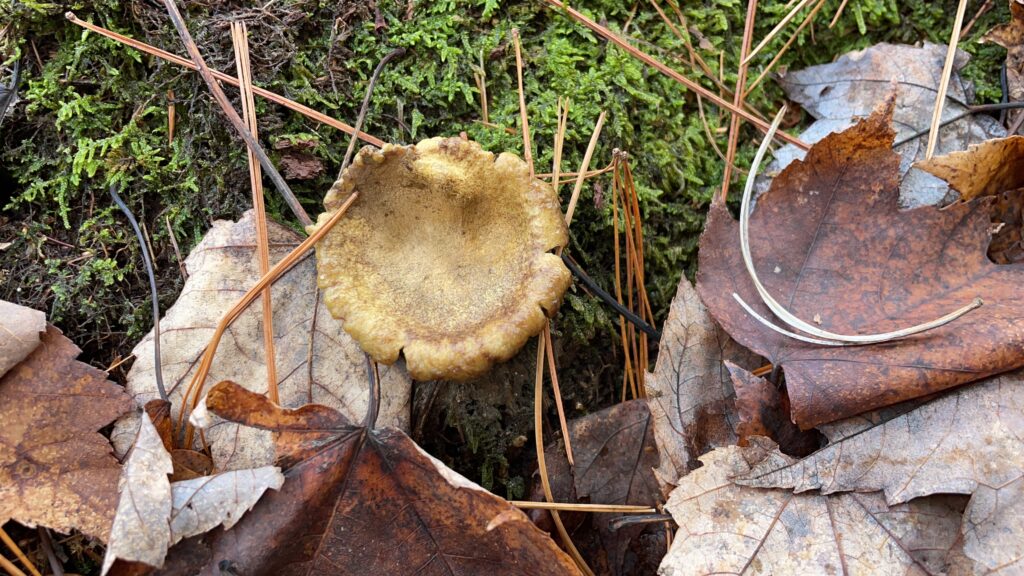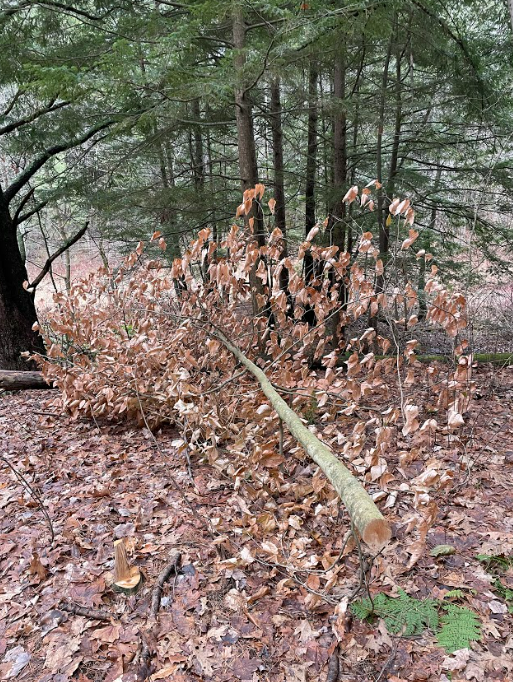Today’s visit to my phenology spot was bittersweet. This is going to be the last time I am going to see my spot for a whole month! I tried my best to document as much as I can because I have a feeling that by the time I get back there will be a lot of changes.
The leaf litter on the ground was a mixture of white oak, red oak, Norway maple, beech, and red maple trees. The red maple leaves on the ground suspired me because I had not noticed a red maple tree in my area ever before. There were a lot of eastern white pine needles and pinecones on the ground. Most of the pine needles are dark brown and decomposing. I saw an abundance of these leaves, so I am assuming that the tree exists somewhere right outside of my marked spot. The leaves are continuing to decompose as evident from the dark shriveled and pressed leaves that hid under the fresh layer of fallen leaves. I saw many signs of decomposers. Today was a rainy day so the fungi was very bright against the brown forest floor. These decomposers break down the dead material and turn it into nutrients that can be taken up by primary producers.



There was still an abundance of ferns that were scattered on the floor. Some of the ferns were covered up by the leaf litter. Speaking of leaves, there were still a handful of trees that had leaves hanging on the branches. The species that still had leaves were in the mid understory. There was a dogwood tree in my area that had leaves on the branches. Two other species in the mid layer of the forest that had leaves still were the Norway maples and American beeches. To the right of my spot there is a pine stan that is very shaded. I could see a few maple trees with leaves still on the branches.
I heard a trickle of water in the valley near me. I decided to walk down to the source and I found a little steam that flowed through the valley. My spot is on a hill and I suspect that rain runoff can roll down my hill when it rains. I have gained a new perspective of my phenology spot from going down to the stream. I saw that there a lot of snags surrounding my area. I am unsure of the reason as to why there are so many dead trees but I want to explore this more. On my walk back I saw a beech tree that had just fallen. I took pictures of the stump to document what happens to it. I think it will be covered in moss and algae by my next visit.


At my spot I took a closer look into a stump of one of my trees. This stump was very full of life and moss and fungi that covered the stump. It is fascinating to take a deeper look into the intricacies of the stump and the life that emerged from the fallen tree.
I also noticed that fungi/algae thrives at the end of broken branches. Here is a video of milk-white toothed polypore that I spotted on a dead branch.
I had a lot of fun visiting my phenology spot this semester. My favorite part about this project is that it helped me get outside more. I have had a long and stressful week this week and being out at my spot helped me calm my mind and get me into the right head space. Another part of this phenology blog that I enjoyed was the hands-on learning. This was a chance for us to apply what we learned about in class to the natural life that surrounds us. I am excited to continue to visit my spot in the new year 🙂
